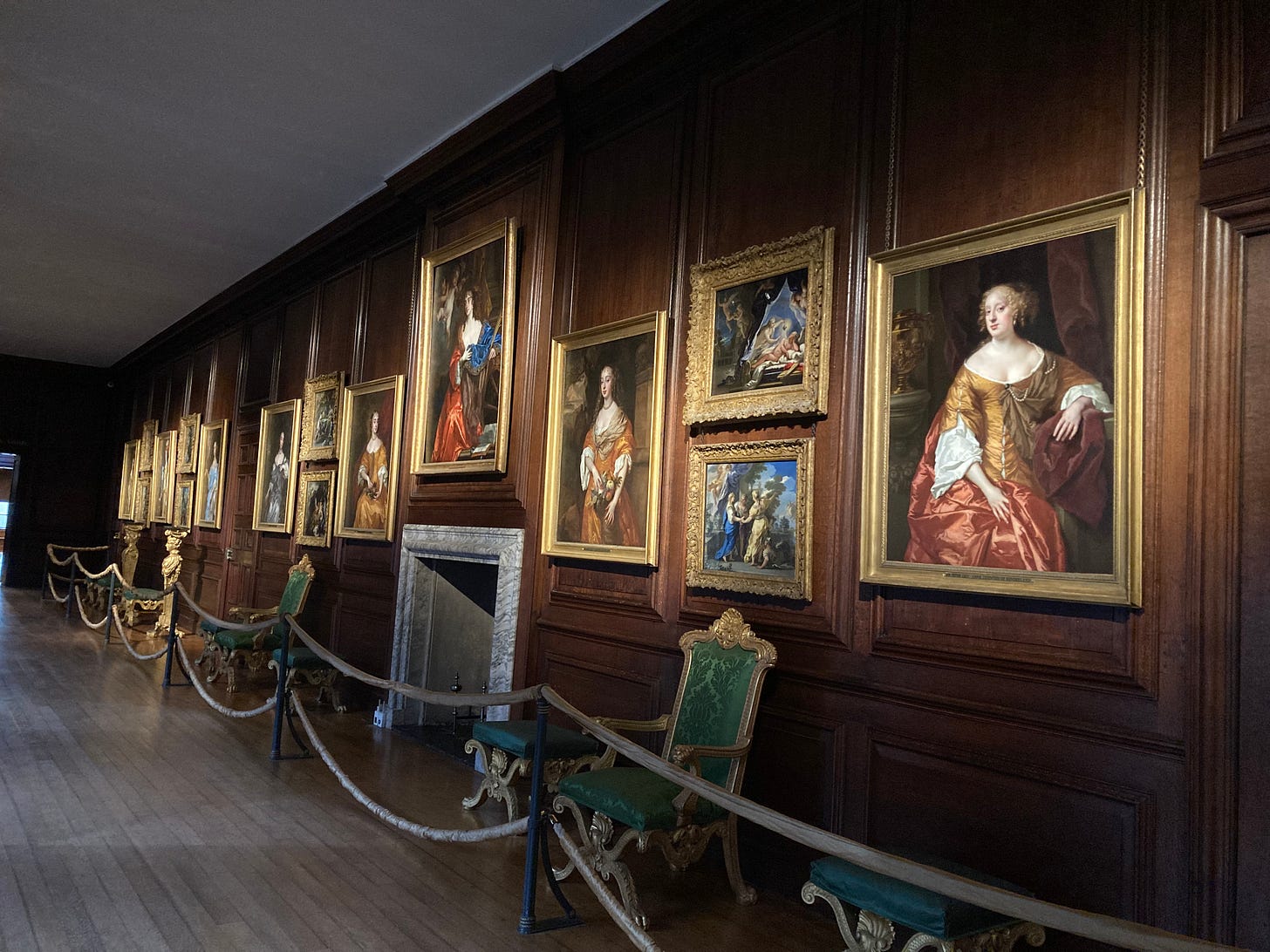Throwback to England because the vibes in the U.S. ain't it
Let's talk about British design history and not our failing democracy!!!!
I began this year aiming to monitor my news consumption, but chile— there is too much news happening in the world, particularly on the home front. I can’t open even my phone without receiving a chilling headline.
I keep trying to distract my brain with positive news, like the development of beehive fences. Farmers in Kenya and elsewhere have been using this gentle deterrent to protect their crops (and bodies) from elephants and provide a secondary income. Empowering! It almost makes me forget about those cuts to foreign aid and scientific research [crying in pain emoji].
Though I have no plans to emigrate from the U.S. (YET), I’ve been reflecting on the immense privilege it was to go to study in England through my master's program. At the end of January, I spent two weeks in London asking the question: what is British design history? After a whirlwind of visiting museums, country estates, and neighborhoods, I am ready to testify about the history of England and all the arts and objects that flow therefrom (with pictures).
London
The same day we landed in the UK, our group of 13 —eight masters fellows, three PhD students, and two instructors—did a walking tour of downtown London and stopped at Guildhall, pictured above. In medieval times, the guild system regulated the main crafts and industries. They set prices and quality standards, lobbied for favorable policies, and contributed mutual aid. Unlike much of Europe, the U.S. never developed a formal guild system, though some trades had groups that operated as proto-unions.
We also went to an archeological museum called the London Mithraeum, which displayed the remains of a 3rd-century Roman temple to the god Mithras on the site of a lost river. It served as a reminder of just how old this modern capital city was.
High Style at Hampton Court
This 500-year-old palace was established as a seat of power for the Tudor Dynasty but has also been home to many monarchs after. Henry the VIII, (who broke away from the Pope and made himself head of the Church of England in 1534), resided at Hampton Court with his six wives, (whose lore I am perhaps a bit obsessed with). On our tour, a food historian showed us the inner-workings of the palace kitchens. These were vast interior and exterior spaces where staff prepared a startling amount of out-of-season and costly meals (800 a day!) for the court’s short-term stays.
My favorite part of this tour was seeing Sir Peter Lely’s portraits of the “Windsor Beauties,” noblewomen whose beauty made them celebrities of the mid- to late-1600s. Mezzotints (a printing method known for producing a velvety appearance ) of these court paintings spread the English portraiture style and inspired America’s early portrait painters in the 1700s.
(SO MUCH) silver and gold!
Pictured above is what we material culture students call conoissing (from connoisseurship). It's getting up close and personal with an object to wonder, why does it look that? The Wallace Collection is a treasure trove of masterpieces: 15th-century Renaissance wall frescoes from Italy, 18th-century French furniture and porcelain, (including some owned by Marie Antoinette), and paintings by the Old Masters. The last time I was bombarded with so much gold and precious stones was reading about Solomon’s Temple in the Bible.
Promenadin’ along
On my free day in London, I ate some sort of English roast beef hot pocket, and walked through Hyde Park toward the Kensington Palace Gardens. Beautiful sights, too many birds. A man convinced me to feed a peanut to a parakeet (yes, they were wild parakeets) which was fun until I saw three rats scampering in the bushes and promptly learned why you’re not supposed to feed the birds.
I also saw three musicals. First, I saw Natasha, Pierre & the Great Comet of 1812 (a show based on a segment of Tolstoy’s War and Peace that I had been desperate to see since it closed on Broadway in 2017). I also saw Hadestown (for the second time), and Back to the Future: The Musical, which had the best special effects I had seen in a stage show. It really looked like that car was going 88 miles per hour to 1985!
Aestheticism and art in the Industrial Revolution
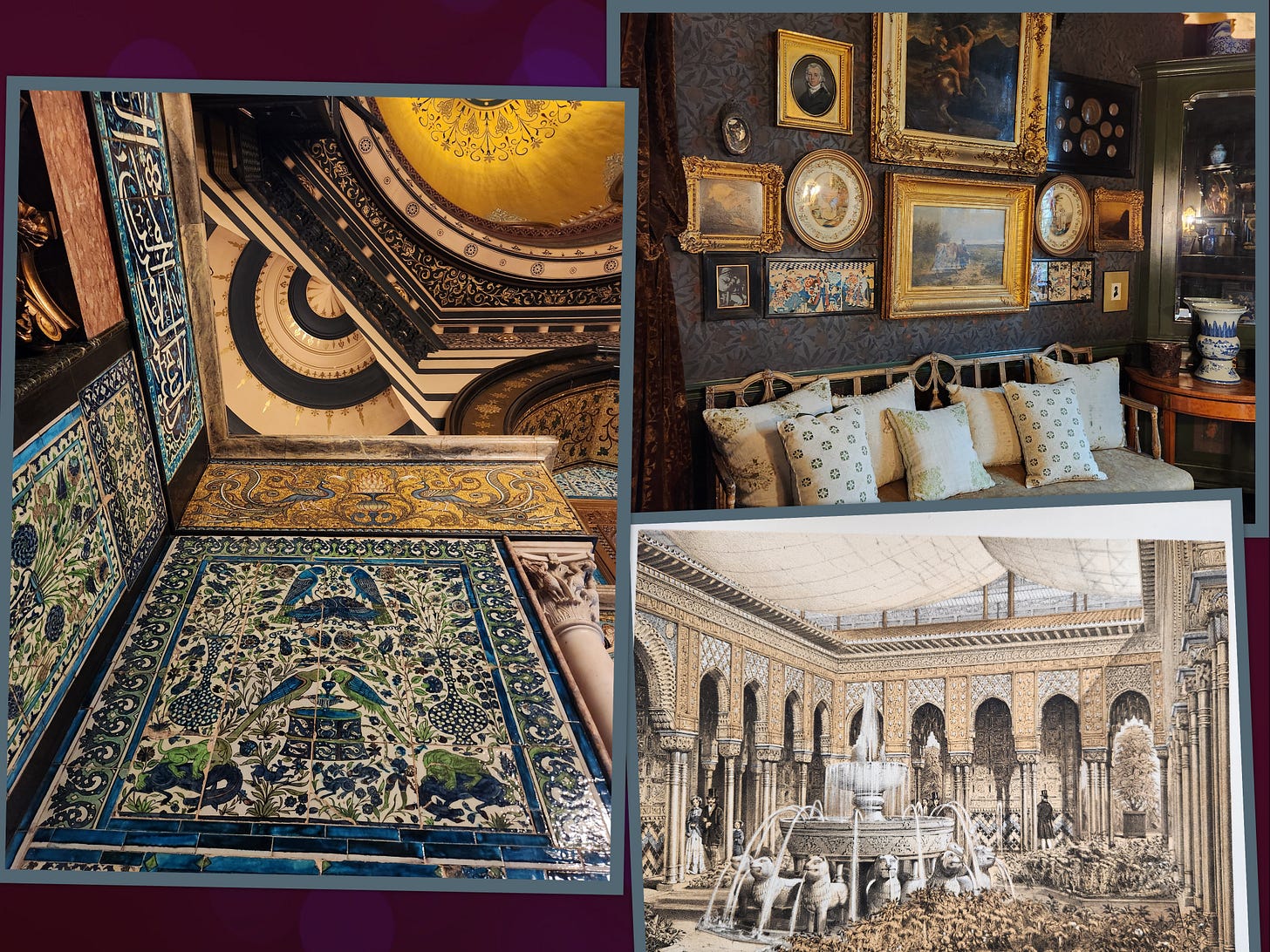
Perhaps my favorite house museums in London were the “aesthetic” apartments of London’s elite artist class. Nothing could prepare me for the level of maximalism in the Sambourne House (I’m talking at least three different types of wallpaper on one wall). Similarly shocking to behold, was the fountain and hallway area covered in Persian tiles and calligraphy in painter Sir Frederic Leighton’s house.
We can’t talk about any Western art history without talking about orientalism, which is the appropriation, exoticization, and fetishization of cultures in the Middle East, Asia, and North Africa. It has ebbed and flowed throughout the centuries but reached a height in the late 1800s. The popularity of Eastern aesthetics is deeply connected to the expanding reach of the British Empire. For many, owning objects considered “exotic” projected worldliness, wealth, or “good taste.”

In London, we also went to the Black Cultural Archives at Brixton, Museum of the Home, the Victoria and Albert Museum, the Science Museum, the Garden Museum and Dennis Sever's House — phew!
Leeds!
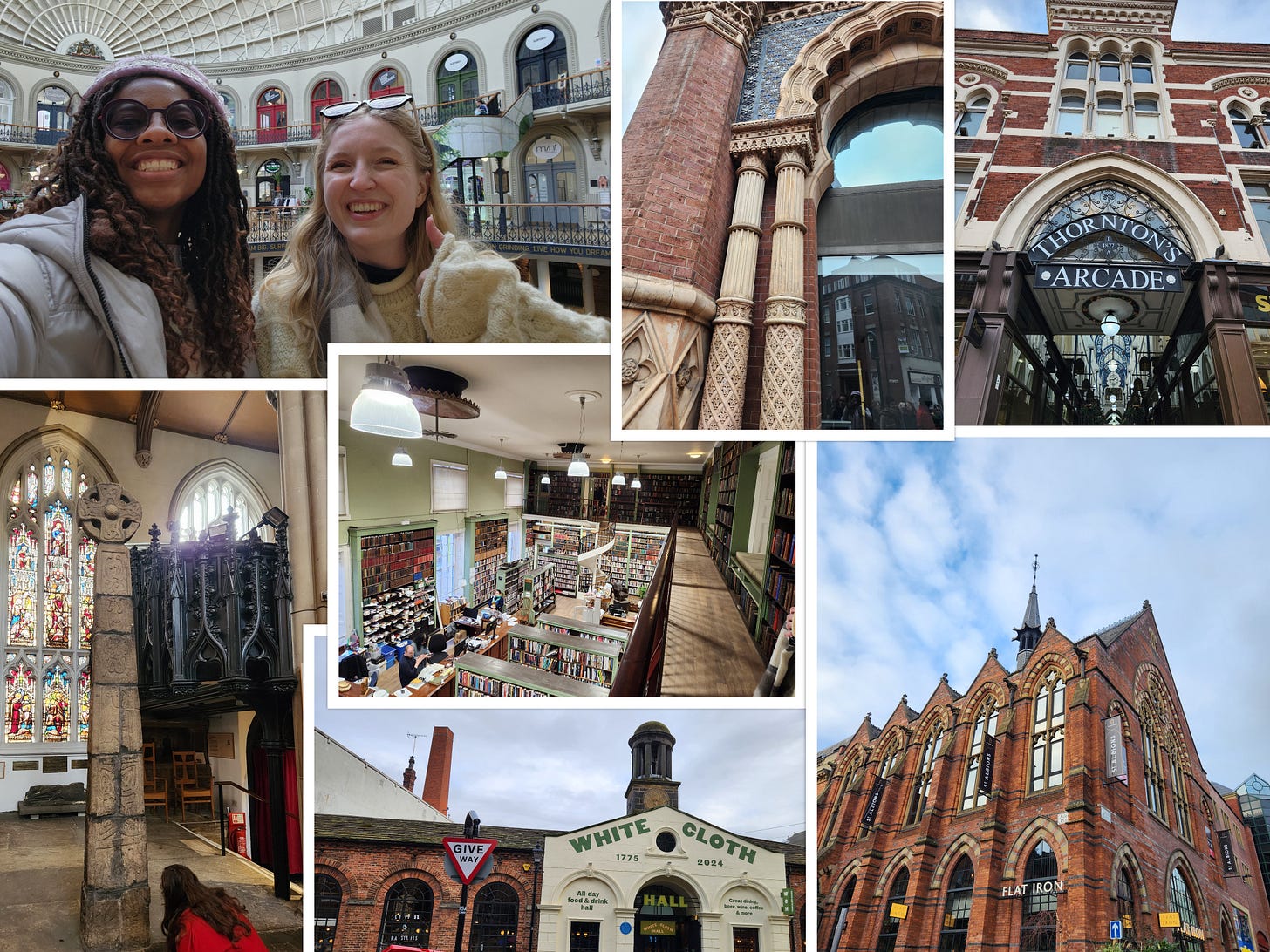
After our week in London, we headed to Leeds, a city in Yorkshire county, in the upper-west midlands. Our intrepid tour guide walked us through the history of this industrial powerhouse turned popular university/foodie/finance city. While nearby York has been a robust city since the Roman times, Leeds only grew in the late 1700s when it became a center for the manufacture of woollen cloths. Now, many of the historic sites have been forgotten or ignored because of deindustrialization and the steep cost to preserve the buildings.
Out in the countryside we went to two massive country houses: Temple Newsam (deceptively not a temple) and Harewood House (which is really a castle). These sprawling manors housed centuries of masterpieces in craftsmanship, architecture, design, and portraiture— a level of extravagance only made possible through the former owners’ investments in the slave trade. This was an important topic that curators of these places had been working to embed in their interpretation of different rooms. Even if not all the owners directly owned slave plantations in places like Jamaica, they profited from and even held high offices in businesses like the Royal African Company.
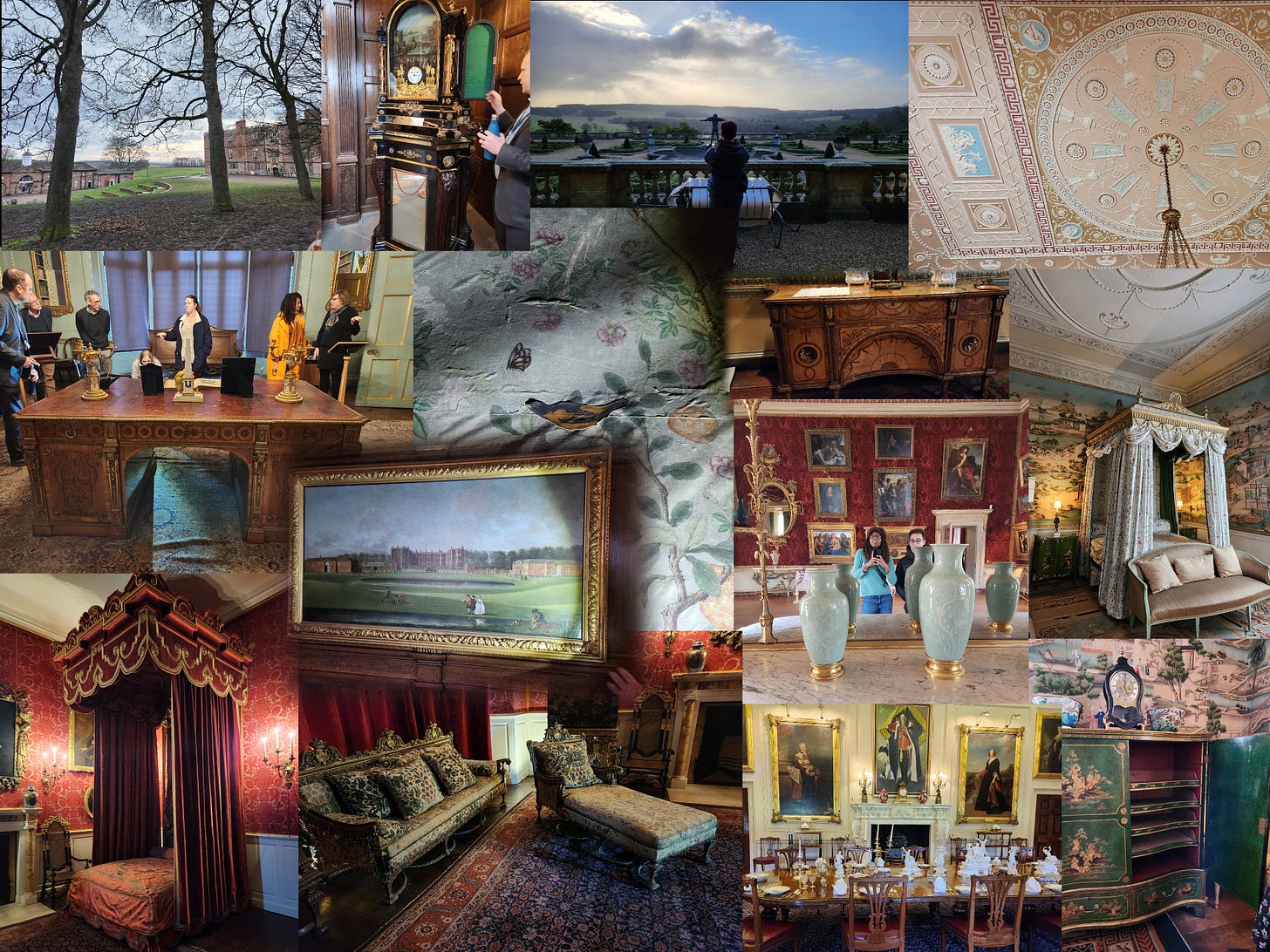
Pottery-galore at Stoke-on-Trent
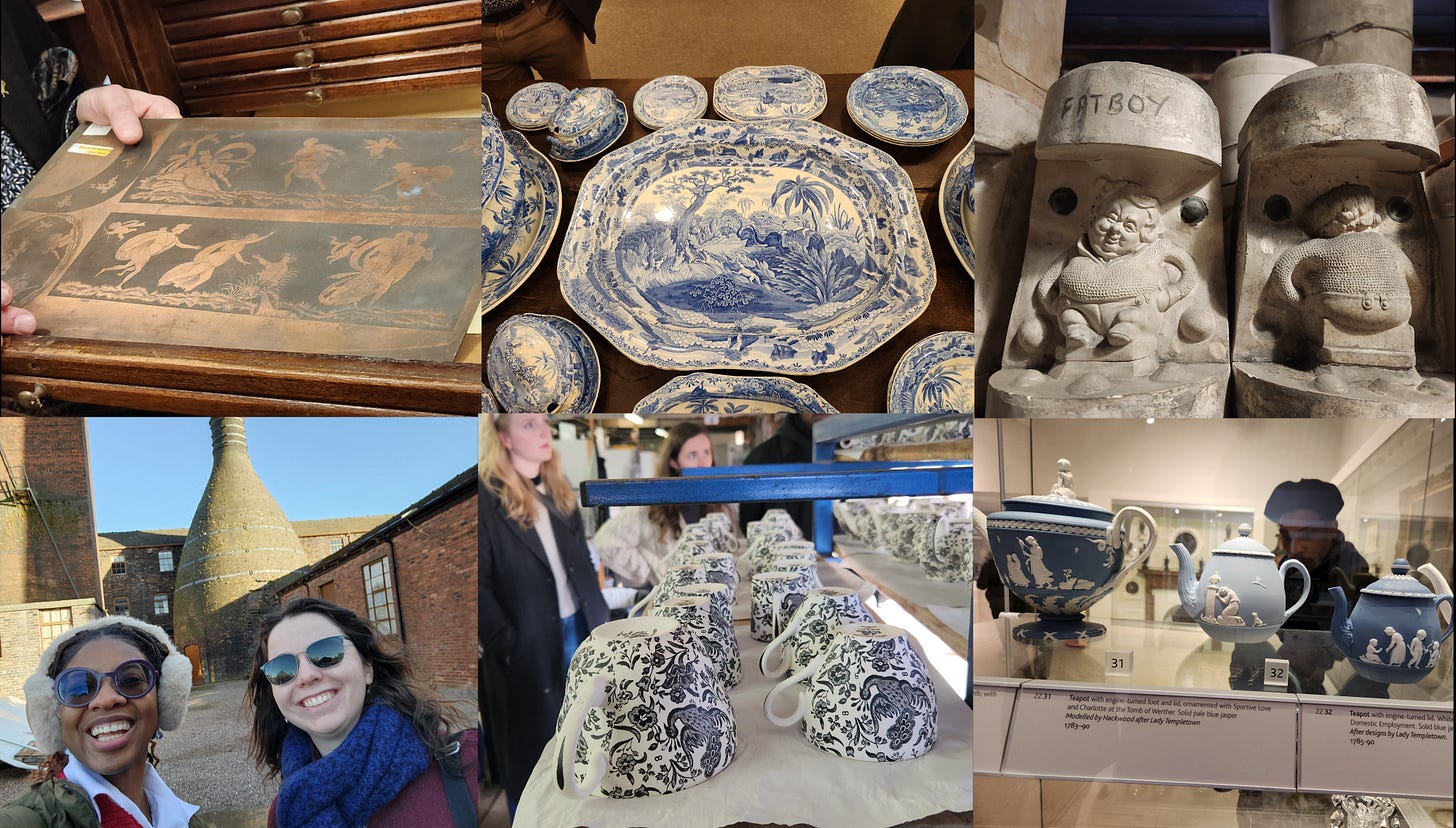
In Stoke-on-Trent, the heart of the British export ceramics industry in Staffordshire, we dug even more into the labor history and social history of the artisans. At the Spode Museum, we tried our hand at the transfer printing process, which involved lifting designs engraved into copperplates using oil and pressure and then transferring them onto the ceramic surfaces. From the 18th to 20th century, this was specialized work that required a 6-7 year apprenticeship.
The closing of potteries in Stoke-on-Trent has had a depressing impact on the region’s economic landscape, but the heritage sites there do a wonderful job engaging community members and international visitors in the region’s history.
Interesting factoid: Have you ever seen the “Am I not a man and a brother” anti-slavery medallion? Designed by Josiah Wedgwood's pottery firm in 1787, it became one of the most common visual tropes of the transatlantic antislavery movement. (I also find the imagery exceedingly paternalistic.)
Bath, Bristol, and bye bye!
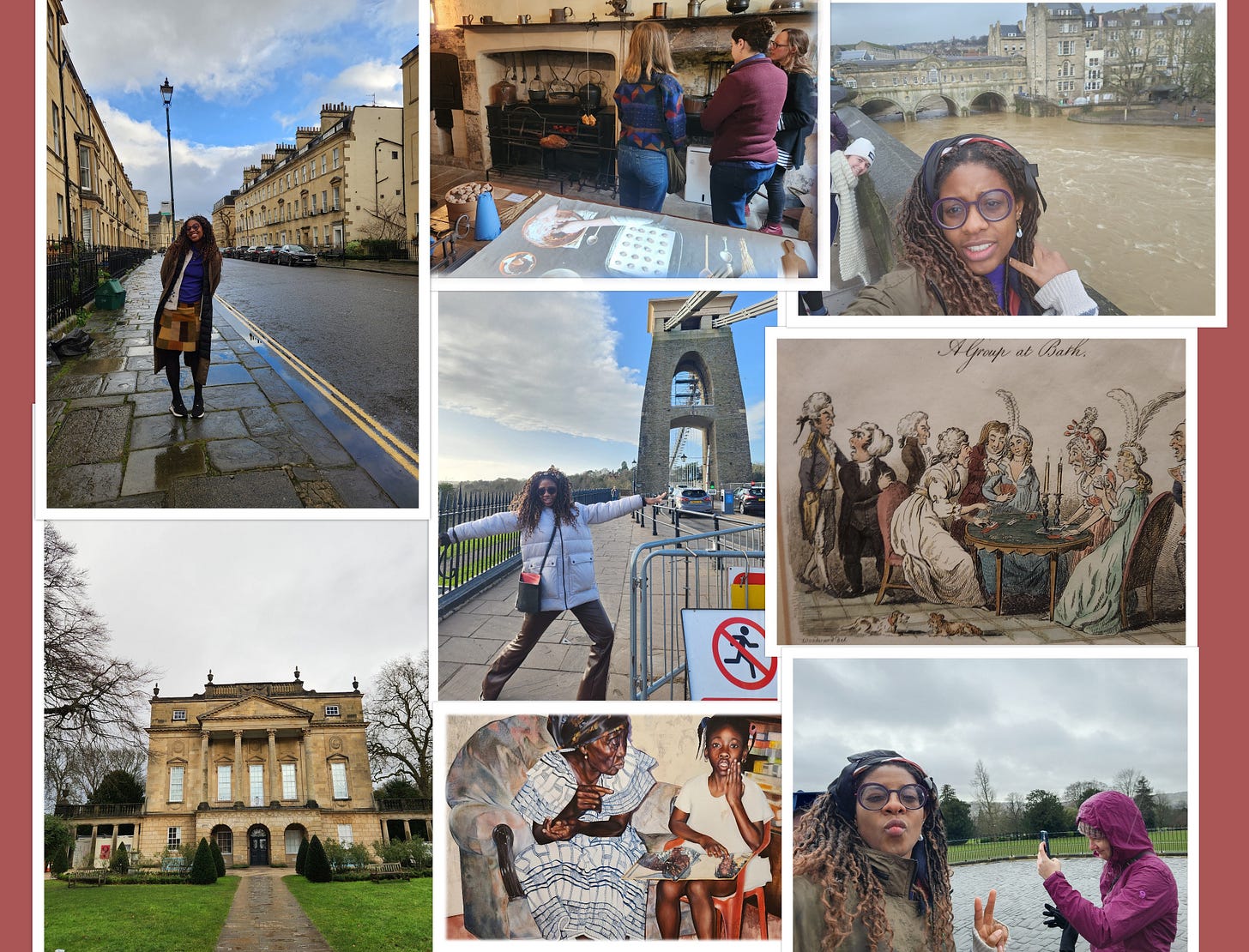
I had already visited Bath and Bristol before, but this time around, I saw new sights, made new friends, and discovered new secrets of the UNESCO World Heritage city, like at No. 1 Royal Crescent. Besides being one of the picturesque spots where Bridgerton was filmed, it's a house museum with immersive audio-visual interpretation of actors performing (I live for drama!) We also went to the Holburne Museum (Lady Danbury’s estate), which boasts an impressive collection of decorative arts, British portraiture, and contemporary exhibits. This time touring Bath, I learned more about the social upheaval and decadence behind Bath's manicured Georgian facades, which architecture they have largely preserved to this day.
After a whole two weeks of gallivanting around historic sites, I was aching for home. When I got back, however, my spring semester courses awaited me. I’ve stayed pretty occupied working on projects in furniture, paintings & prints, historic preservation, and preparing my thesis. Yet the jetlag going into the new semester was totally worth it!
Today, I'll be heading off to Denver and Colorado Springs to visit my besties from college and enjoy the air 6,000+ feet above sea level. Alas, I always have more adventures ahead!
So long, farewell, auf Wiedersehen until my next post!






